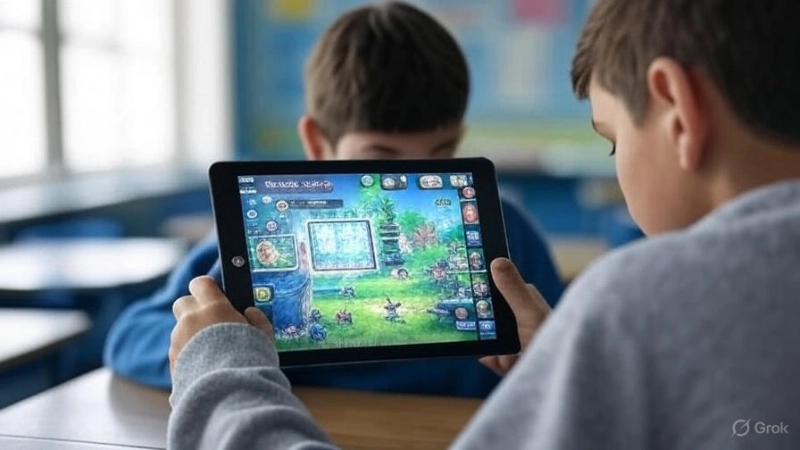Gimkit is transforming how teachers engage students and reinforce learning through its innovative, game-based platform. Designed by a high school student, Josh Feinsilber, in 2017, Gimkit combines quiz-style learning with strategic gameplay, making it a standout tool in the EdTech space. This article explores Gimkit’s features, benefits, and practical applications, offering insights for educators looking to enhance their teaching methods.
What Is Gimkit and How Does It Work?

Gimkit is an online platform that turns traditional quizzes into interactive, game-show-style experiences. Students answer questions on their devices, earning virtual currency for correct responses, which they can spend on power-ups to boost their scores or gameplay. Teachers create or import question sets, called “kits,” and choose from various game modes to suit their classroom goals. Students join games using a unique code, playable on any internet-connected device, making it accessible for both in-person and remote learning.
Unlike static quiz platforms, Gimkit’s dynamic gameplay encourages strategic thinking. For example, in Classic Mode, students answer questions to earn virtual money, which they can invest in upgrades like extra points per question or a second chance for incorrect answers. Other modes, like “The Floor is Lava” or “Diamond Rush,” add thematic twists, keeping students engaged through competition and collaboration.
Why Gimkit Stands Out in EdTech
Gimkit’s unique blend of gamification and education sets it apart from competitors like Kahoot, Quizlet, and Blooket. Here’s how it compares:
-
Kahoot: Known for fast-paced, competitive quizzes, Kahoot focuses on leaderboards and quick responses. Gimkit adds depth with its currency system and strategic power-ups, appealing to students who enjoy planning and resource management.
-
Quizlet: Primarily a flashcard tool, Quizlet excels at rote memorization. Gimkit, however, integrates flashcards into interactive games, making it more engaging for group settings.
-
Blooket: Similar to Gimkit, Blooket offers gamified learning but lacks the same level of customization and strategic depth, such as Gimkit’s power-up system.
A 2023 study on nursing students found that Gimkit significantly improved post-test scores compared to traditional methods, highlighting its effectiveness in active learning. The platform’s ability to adapt to various subjects and grade levels makes it versatile for K-12 and higher education.
Key Features of Gimkit
Gimkit offers a robust set of tools to enhance classroom learning. Here are the standout features:
-
Customizable Kits: Teachers can create kits from scratch, import questions from Quizlet or spreadsheets, or use pre-made kits from Gimkit’s library. The KitCollab feature allows students to contribute questions, fostering ownership and collaboration.
-
Diverse Game Modes: Options like Classic, Team, and 2D modes (e.g., “Blastball” or “Don’t Look Down”) cater to different learning styles. Some modes emphasize strategy, while others focus on collaboration or speed.
-
Real-Time Analytics: Teachers can monitor student progress, accuracy rates, and question-specific performance during games, enabling data-driven instruction.
-
Homework Assignments: Gimkit supports asynchronous learning by allowing teachers to assign kits as homework, with progress auto-saved for students.
-
Gimkit Creative: This feature lets users design custom games without coding, offering a creative outlet for both teachers and students.
How to Get Started with Gimkit
Setting up Gimkit is straightforward, whether you’re a teacher or student. Here’s a step-by-step guide:
-
Sign Up: Create an account at gimkit.com using an email or Google account. Teachers select their school, grade level, and subject area.
-
Create a Kit: Build a question set manually, import from Quizlet, or copy from Gimkit’s library. Add media like images or audio to enhance questions.
-
Choose a Game Mode: Select a mode that aligns with your lesson objectives, such as individual competition or team-based collaboration.
-
Share the Game Code: Gimkit generates a unique 5–6 digit code for students to join via any device with a web browser.
-
Monitor and Review: Use the host dashboard to track real-time performance and review post-game reports to identify areas for improvement.
For example, a middle school science teacher might create a kit on ecosystems, use KitCollab to have students submit questions, and host a live game in “Trust No One” mode to encourage critical thinking. Post-game reports can reveal which students struggled with specific concepts, guiding future lessons.
Practical Applications in the Classroom
Gimkit’s versatility makes it suitable for various teaching scenarios:
-
Formative Assessments: Use Gimkit to gauge student understanding before a unit test. A pretest on algebraic equations, for instance, can highlight areas needing review.
-
Vocabulary Building: In language classes, kits can reinforce new words. A Spanish teacher reported using Gimkit daily to introduce vocabulary, noting its positive impact on student engagement.
-
Group Collaboration: Modes like Team or KitCollab encourage teamwork, as students work together to answer questions or build quizzes.
-
Homework Reinforcement: Assign kits for independent practice, allowing students to review at their own pace. A 2024 report noted that 8.51 million monthly visits to Gimkit’s website reflect its widespread use for both live and asynchronous learning.
One teacher shared on a review platform, “My students beg to play Gimkit. It’s transformed how I review material, making it fun and effective.” This sentiment is echoed across classrooms, with over 100,000 students using Gimkit regularly.
Tips for Maximizing Gimkit’s Impact
To get the most out of Gimkit, consider these strategies:
-
Practice First: Test your kit to ensure questions are clear and game settings align with your goals.
-
Balance Fun and Learning: Choose game modes that engage students without overshadowing the content. For example, avoid overly distracting modes like “Diamond Rush” for serious reviews.
-
Use Analytics: Review post-game reports to identify knowledge gaps. If 70% of students miss a question on photosynthesis, revisit that topic in class.
-
Encourage Strategy: Teach students to use power-ups wisely, as this fosters critical thinking. For instance, investing in a “streak” power-up can maximize points for consecutive correct answers.
-
Involve Students: Use KitCollab to let students create questions, increasing their investment in the learning process.
Challenges and Limitations
While Gimkit is highly effective, it has some drawbacks:
-
Learning Curve: New users may find the array of game modes and settings overwhelming. Practicing with a test game can help.
-
Language Support: Some teachers, like one Spanish instructor, wish for interface translations to better suit non-English classes.
-
Free Plan Limits: The free version restricts games to five students, though group play or a projector can bypass this. Gimkit Pro, at $9.99/month or $59.98/year, unlocks full features.
Despite these challenges, Gimkit’s frequent updates, driven by user feedback, ensure continuous improvement. For example, the 2023 introduction of homework assignments for 2D modes addressed a key teacher request.
Gimkit’s Impact on Student Engagement
Gimkit’s gamified approach taps into students’ intrinsic motivation. The virtual currency system mirrors real-world decision-making, teaching resource allocation alongside academic content. A high school teacher reported using Gimkit for a national certification video, crediting it with advancing student learning through interactive play.
Social media posts from educators highlight Gimkit’s popularity. One teacher noted, “Students who struggle with traditional quizzes shine in Gimkit because it feels like a game, not a test.” This aligns with research showing that gamification boosts retention and engagement, particularly for Gen Z learners accustomed to interactive technology.
Future of Gimkit
Gimkit continues to evolve, with recent additions like Gimkit Creative and new game modes like “One Way Out.” The platform’s small team, led by Feinsilber, prioritizes user feedback, ensuring updates align with classroom needs. With a reported annual revenue of $750,000 in 2025, Gimkit’s growth reflects its value in education.
Educators can expect more features, such as enhanced analytics or new creative tools, as Gimkit expands its suite of offerings. Its focus on memorable learning experiences positions it as a leader in EdTech innovation.
Final Takeaway
Gimkit is more than a quiz tool—it’s a dynamic platform that makes learning engaging, strategic, and data-driven. By blending gamification with education, it empowers teachers to create memorable classroom experiences while providing actionable insights into student performance. Whether you’re reviewing math concepts, building vocabulary, or fostering teamwork, Gimkit offers a versatile, student-centered solution. Sign up for a free account at gimkit.com and start transforming your classroom today.
Sources:
-
Common Sense Education, 2022
-
Gimkit Blog, 2023
-
ScienceDirect, 2023
-
Tech & Learning, 2023
-
Intercool Studio, 2025
-
Eduporium, 2025
- Read also:https://techdailyguide.com/equestrian-paralympics-2024-2024/

